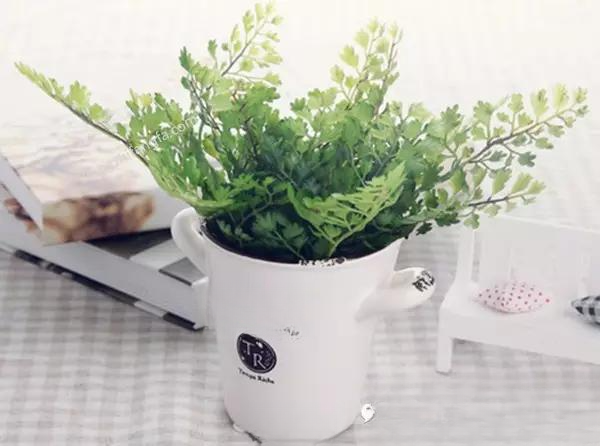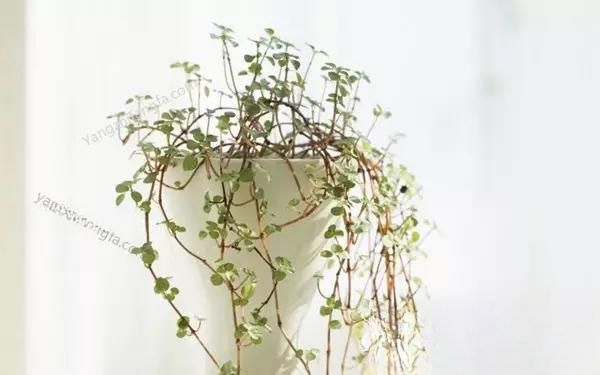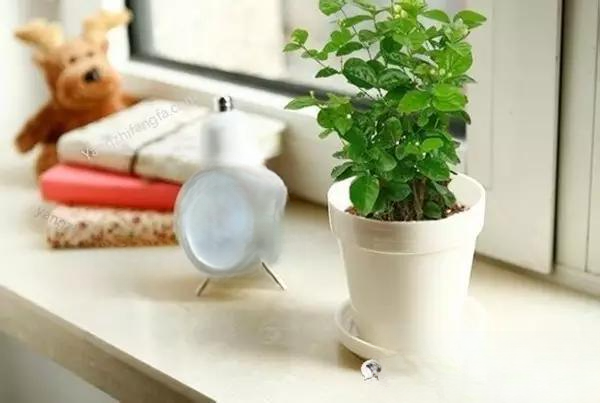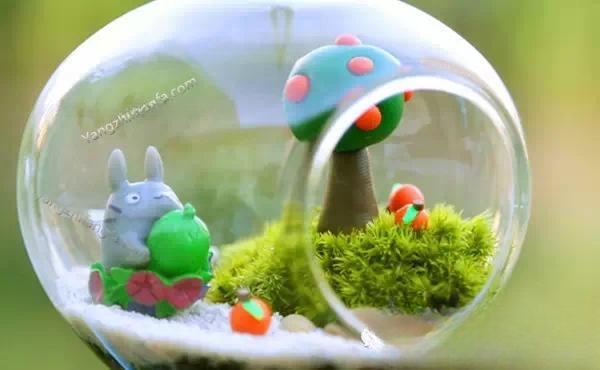Several common propagation methods for flower propagation

The reproduction of flowers is divided into sexual reproduction and asexual reproduction. Sexual reproduction is the reproduction of offspring by sowing seeds. Asexual reproduction is also called vegetative reproduction, which uses part of the plant's vegetative organs to cultivate new plants. The methods include cuttings, divisions, grafting and layering.
Propagation by sowing
The sowing time is roughly spring and autumn, usually from February to April in spring and from August to October in autumn. Seeding propagation is suitable for most flowers, generally there are two types of sowing in the open air and sowing in pots.
For outdoor sowing, choose a place with high and dry terrain, flat, sheltered from the wind and facing the sun, with loose soil and good drainage. The bed should be made on a sunny day and when the soil is relatively dry. The land should be deeply plowed and carefully prepared, and the soil should be disinfected and base fertilizer should be applied.
Due to geographical restrictions, family cultivation does not have a large nursery bed, so pot sowing is used. If there is a courtyard downstairs, open-field broadcasting or row sowing can also be used. The most economical method is pot sowing and transplanting after the seedlings emerge. For pot sowing, wash the pots clean before sowing, fill the pot holes with tiles, and spread coarse sand or other coarse media in the pots as a drainage layer. Then fill in sieved fine sand loam, compact and scrape the pot soil, and then sow.
Before sowing, you must choose the right variety, and choose high-quality seeds with full grains and no diseases or pests.
Some large seeds, such as Impatiens, can be sown evenly one by one, then compacted and covered with a layer of fine soil. Small seeds, such as cockscomb, can only be sown evenly in the pot, then gently compacted and covered with a thin layer of fine soil. Use a fine-meshed spray bottle to spray water, or use the immersion method to place the sowing pot in a pool of water, with an inverted empty pot underneath, and let the water penetrate from the bottom to the top until the entire soil surface is moistened, so that the seeds can fully absorb water and nutrients.


Propagation by division
Division propagation is mostly used for the propagation of perennial herbaceous plants. Sometimes, division is also often used to promote the growth of new plants in order to renew old plants. Division propagation can be roughly divided into the following categories:
① Propagation by division of tubers: For example, the roots of dahlia are enlarged and lumpy, and buds sprout in many places on the rhizome. The tubers can be cut (must have buds attached) and planted in another place to reproduce into a new plant.
② Bulb division propagation: The stem shortens and thickens, becoming flat or spherical, such as gladiolus, tulip, freesia, tuberose, etc. The naturally divided bulbs on the bulbs are divided and planted to cultivate new plants. Generally, very small bulbs cannot bloom in the first year, but only bloom in the second year. The mother bulb can be eliminated year by year due to the decline of growth. The bulb division propagation season is determined according to the time of digging and planting. After digging the bulbs, separate the bulbs that are too small and place them in a ventilated place to allow them to dormant before planting.

③ Propagation by division of rhizomes: For the large underground rhizomes that lie horizontally in the ground, such as canna and bamboo, use a sharp knife to cut the part of the rhizome with 3-4 buds on each long stem and plant them separately.
④ Propagation of perennial plants by division: After three or four years of planting, or two or three years of potting, the perennial plants with clumps can be propagated by division in spring and autumn because the clumps are too large. Dig out or combine with repotting, the roots will naturally separate in many places, generally into 2-3 clumps, each with 2-3 main branches, and then planted separately. Such as daylilies, irises, spring orchids and other flowers.
⑤ Division propagation of clump-type and shoot-sucking shrubs: dig up clump-type shrubs and flowers in early spring or late autumn, and generally plant 2-3 plants, such as wintersweet, Nandina domestica, lilac, etc. Another type is flowers and trees that are easy to produce root shoots. The shoots produced from the roots of the mother plant are divided and planted separately with roots, such as asparagus fern, winter jasmine, peony, etc.

Propagation by cuttings
Cuttings are the main method of asexual reproduction, generally using branch cuttings, leaf cuttings and root cuttings.
Branch cuttings are cuttings of a part of a branch as a cutting, which will produce new roots and new buds under appropriate conditions and become an independent plant. Cuttings made from lignified branches are called hard branch cuttings, while cuttings made from semi-lignified branches are called soft branch cuttings. Soft branch cuttings are often used in flower production.
① Leaf cutting: using plant leaves as cuttings, generally used for plants with strong regeneration ability. It can be divided into full leaf cutting and partial leaf cutting. When using leaves with petioles for cuttings, it is very easy to root. The rooting parts of leaf cuttings are leaf margins, leaf veins, and petioles. African violet leaves can grow roots at the petiole when inserted in soil or soaked in water. Tiger orchids are cut into several sections for cuttings. The leaves of tiger orchids are relatively long and can be cut into 7-8 cm long. They are inserted obliquely into the pot and roots and sprouts can be grown from the lower part of the leaves.
② Leaf bud cutting: A leaf bud and a little stem are attached to the cutting, which is between leaf cutting and branch cutting. The stem can be cut near the bud, and left a little longer below the bud, so that the growth is strong and the roots are strong. Generally, the cutting length is 3 cm. Rubber trees, Dieffenbachia, hydrangeas, and camellias can all be propagated by this method.

③ Branch cuttings: Due to the differences in materials and time, it is divided into hard branch cuttings and tender branch cuttings. Hard branch cuttings: After the leaves fall or before the next spring buds, choose the middle part of a one- or two-year-old branch that is mature, strong, full of tissue, and free of diseases and insects, cut it into cuttings of about 10 cm long, 3-4 nodes, the cut should be close to the internode, and the upper end should be cut into an oblique mouth to facilitate drainage, and then insert it into the soil. Soft branch cuttings: that is, the tender branches of the current year. Cut the branches 7-8 cm long, cut off the lower leaves, leave a few leaves on the upper part, and then cut them. Such as chrysanthemum, poinsettia, geranium, crabapple, etc. Semi-hard branch cuttings: mainly cuttings during the growth period of evergreen flowers and trees. Take about 8 cm of semi-mature branches of the current year, remove the lower leaves and leave two upper leaves, and insert 1/2-2/3 into the soil, such as osmanthus and roses.
④ Root cutting: Use roots as cuttings to propagate new seedlings. It is only suitable for species that can produce new shoots at the roots. Generally, when using root cuttings, the larger the root, the stronger the regeneration ability. The root can be cut into 5-10 cm long and inserted obliquely or horizontally to produce adventitious buds and fibrous roots. For example, peony should be close to the root head, which has strong germination power; the roots of hanging pot grass are small and can be cut into small sections of about 2 cm, sprinkled on the surface of the pot and then covered with soil. In addition, wintersweet, peony, gerbera, snow willow, persimmon, walnut, and round-leafed crabapple can all be rooted. Management after cutting: The management after cutting is mainly to avoid strong light too early, shade and water, and keep it moist. The management of root cuttings and hard branch cuttings is relatively simple, just don't let it freeze. Soft branches and semi-hard branches should be carefully managed to keep the pot soil moist to prevent water loss from affecting survival. After rooting, gradually reduce irrigation and increase light. Apply liquid fertilizer once after new buds grow out. The plant can be transplanted after it grows. In addition, during the entire management process, attention should be paid to pest and disease control and weeding and loosening the soil.
--------------------------------------------